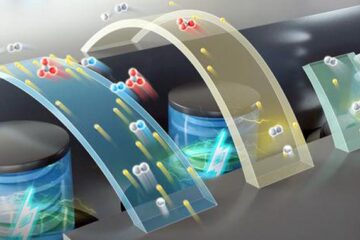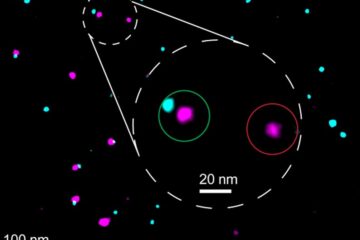'Friend' protein keeps nerve signals in check

Without it, you die. A more recently discovered protein called tomosyn hangs on, or binds, to syntaxin. Its Japanese discoverers named it tomosyn by combining tomo — “friend” in Japanese — with “syn” for syntaxin, to mean “friend of syntaxin.”
Now a U.S.-based research team reports this friendly protein appears to play a key role in regulating the synaptic release of neurotransmitter chemicals, which suggests that it may also play a role in learning and memory.
Better understanding of the neurological function of this protein may lead to a better understanding of how synapses get stronger or weaker, and how that, in turn, affects memory formation and loss, says Janet Richmond, associate professor of biological sciences at the University of Illinois at Chicago.
“It's amazing we remember things from as far back as our early childhood with the constant protein turnover going on in our brains,” said Richmond. “So understanding how proteins function to control synaptic strength is really important.”
Richmond and her colleagues used the soil nematode worm Caenorhabditis elegans to study the function of tomosyn using a recording technique she developed to understand how synaptic proteins affect release of neurotransmitters at the nerve cell junctions. The lab's ability to study synaptic transmission was recently improved with the addition of high pressure freeze electron microscopy and immuno-gold staining, which together provide a clearer picture of where neurotransmitter-containing synaptic vesicles and proteins cluster.
Mutant worms lacking tomosyn were compared to normal worms to determine what effect, if any, the protein had on neuronal transmission. The observed effect is substantial — the protein helps put a limit on the number of synaptic vesicles that become competent to fuse at synapses, thereby regulating the amount of neurotransmitter released.
“If you remove tomosyn, you get exuberant neurotransmitter release,” said Richmond. “This suggests tomosyn is a negative regulator of release. In other words, it dampens down the system, regulating the efficiency and strength of the synapse.”
Because the nematode C. elegans uses proteins in its nervous system comparable to those in humans, Richmond suspects that forthcoming experiments involving tomosyn in mammals such as laboratory mice will show similar results.
Media Contact
More Information:
http://www.uic.eduAll latest news from the category: Life Sciences and Chemistry
Articles and reports from the Life Sciences and chemistry area deal with applied and basic research into modern biology, chemistry and human medicine.
Valuable information can be found on a range of life sciences fields including bacteriology, biochemistry, bionics, bioinformatics, biophysics, biotechnology, genetics, geobotany, human biology, marine biology, microbiology, molecular biology, cellular biology, zoology, bioinorganic chemistry, microchemistry and environmental chemistry.
Newest articles

High-energy-density aqueous battery based on halogen multi-electron transfer
Traditional non-aqueous lithium-ion batteries have a high energy density, but their safety is compromised due to the flammable organic electrolytes they utilize. Aqueous batteries use water as the solvent for…

First-ever combined heart pump and pig kidney transplant
…gives new hope to patient with terminal illness. Surgeons at NYU Langone Health performed the first-ever combined mechanical heart pump and gene-edited pig kidney transplant surgery in a 54-year-old woman…

Biophysics: Testing how well biomarkers work
LMU researchers have developed a method to determine how reliably target proteins can be labeled using super-resolution fluorescence microscopy. Modern microscopy techniques make it possible to examine the inner workings…





















